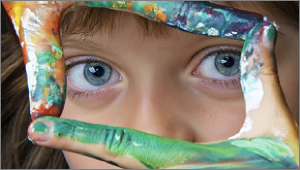Art
Intent:
Our aim at Flora Gardens is that Art and DT are delivered through a rich, imaginative and creative cross-curricular approach. Our Art curriculum provides children with opportunities to develop their skills using a range of media and materials. Our topic based curriculum enables children to use their art skills to reflect on and explore topics in greater depth.
Implementation:
The teaching and implementation of Art and Design at Flora Gardens Primary School is based on the National Curriculum. We use an Art skills progression document to ensure appropriate age related skills are being taught from EYFS to Year 6. Class teachers are responsible for teaching Art and Design, although have also welcomed visitors and artists from various organisations to be involved with the teaching of topics and whole school assemblies. For example, we invited illustrator William Grill to join us for an exciting assembly about his first children's book, Shackleton's Journey. He revealed the inspiration, thought process, and design behind his sketches, as well as hosting drawing workshops for each class in KS2. Here at Flora Gardens, we take every opportunity to build on the children’s cultural capital. One of the ways we do this is by sharing the work of exceptional artists. The children have learnt about Pablo Picasso, Henri Rousseau and Frida Kahlo, just to name a few. This is done in order to enrich our Art and Design provision and to further support the development of our children’s cultural capital.
Impact:
We were delighted to have been awarded the Artsmark Silver Award in 2018. This award demonstrates Flora Garden’s commitment and passion for delivering high quality Arts education for all students. As well as this, our classroom and corridor displays celebrate the children’s achievements across our wider curriculum subjects. Children take pride in seeing their artwork displayed across the school environment. Teachers use ongoing assessments throughout the year enabling them to inform future art lessons and set appropriate levels of challenge for all students. At Flora Gardens, we also use pupil voice questionnaires as a way to measure the impact of the Arts curriculum on pupils.
At Flora Gardens, our aim is to provide a broad and balanced curriculum and ensuring the progressive development of Art and Design concepts, knowledge and skills.
We believe that a strong Art and Design curriculum can help children to develop the skills that mean they are better prepared to thrive as individuals and citizens, and to succeed in the ever-changing future workplace. We have developed a well-constructed curriculum, with the intent to inspire and encourage them to enjoy learning Art and Design.
Where relevant, the content of our schemes of work links closely with termly topics. Art is embedded in a range of cross-curricular opportunities to support children to develop and deepen their knowledge.
Art and Design topics are alternated every half term and lessons are sequenced to build skills and knowledge.
We want children to:
- Be positive and enthusiastic towards the study of Art and Design.
- Learn initiative, problem solving and organisational skills through Design Technology.
- Develop independent working, autonomy and creativity.
- Gain cultural enrichment through Art.
- Broaden their aspirations.
- Bolster wellbeing through Art and Design.
To ensure the continuation and progression of skills, we have organised our Art learning into three key disciplines:
- Drawing
- Painting
- Sculpture
Children are given opportunities to explore their ideas by experimenting, inventing and creating their own varied works of art using a range of materials. They will learn how to draw, paint, sculpt and explore other art, craft and design techniques.
How Parents Can Help
1. Get messy!
Try to get hold of as many different types of drawing and painting resources as you can to let your child get creative and explore creating art using different materials. Paints, chalk, crayons, pens, pencils, modelling clay and much more can be found in discount shops. Just don’t forget to put lots of newspaper down first!
2. Use household objects creatively
Alternatively, instead of buying materials, let them get creative using things around the house – for example, pasta and pulses to create pictures using glue.
3. Keep a sketch book
Encourage your child to keep a sketch book. Suggest that they take it with them when they go out so that they can look for things to sketch – a tree, a building, a scene. Alternatively, if they see something they would like to draw, take a photo on your phone and let them sketch from it when they are home.
4. Celebrate your child's art
Praise your child’s creations and encourage them not to get disheartened if they feel they have made ‘mistakes’. Explain that art is about being creative and trying out different things. There is no right or wrong way to do things. You could even ‘frame’ their work using coloured paper or card and create a little gallery on the kitchen wall or in their bedroom to display their work.
5. Discuss and enjoy art together
Find out about local art galleries or museums that you can visit with your child. Encourage them to talk about what they see and to share their opinions – about subject matter, colours, what materials the artist used, and so on.
Further Support And Useful Websites
Children’s books for budding artists and writers

Lots of ideas for books about art and creativity.






































